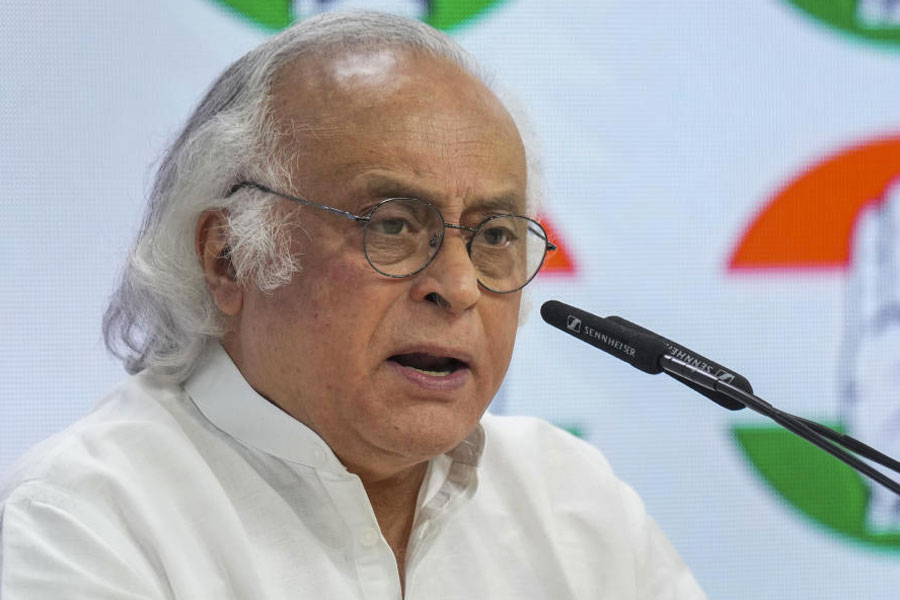 |
| Sex workers at Kamathipura in Mumbai |
Mumbai, April 2: It feels slightly strange to hear the choicest obscenities in Bengali in a female voice at midnight at the railway station in Kandivli, a predominantly Gujarati suburb on the Western line in Mumbai. But it is a common occurrence.
In the late hours every night, as fewer trains crawl in, the shop-lights go out one by one and the traffic-choked roads of the daytime begin to look deserted and forlorn, the girls take over.
They line up on the platform, women of all ages, some in saris and salwar kameezes, the young even in hot pants, face caked white with make-up, lips an angry red and looking only faintly interested in the passing men. They ply the oldest trade. There is a commotion as a young woman barely in her teens, in a shimmering black top, jumps into a speeding autorickshaw after a man. What follows is an older woman giving the auto a chase ? and a torrent of Bengali expletives. The young girl has stolen the other?s customer.
The women are all Bengalis.
Not Kandivli alone. The Shiv Sena has not targeted these migrants to Mumbai in particular, but Bengali women form the biggest group in Mumbai?s red light areas now, along with women from Karnataka. But some activists feel the Bengalis are far more in number than the Kannadigas, the age-old residents of Kamathipura, Mumbai?s biggest sex district.
With police raids and shooting property prices driving out women from Kamathipura, new red light areas are springing up all over Mumbai. In many such places, Bengalis far outnumber women from all other places.
At Marwari Chawl in Worli, where police raids began only six months ago, the Bengali women are being blamed for making the area conspicuous to the policemen. The others also blame the Bengalis for taking away much of the business, because Bengali women allegedly will not stop at anything to get a customer.
?There seems to be no let-up in the number of Bengali women who arrive in droves to Mumbai,? says Aishwarya Sengupta, project manager of Social Activities Integration, an NGO that works in different city red light areas on HIV. ?They constitute most of the floating population of sex workers. And there is no end to the demand for Bengali women either.?
The women who operate mainly from railway stations or highways and not from a fixed address, unlike the women who work in brothels, are called the floating population. ?Our organisation once addressed a ?peer education group? of 21 sex workers from this category. All 21 were Bengalis.?
Population Services International, the NGO behind the Balbir Pasha ads, has recruited Bengalis as activists to help the organisation achieve better communication in its AIDS programmes in brothel areas.
?The number of Bengali women has gone up remarkably in the past two or three years,? says Shilpa Merchant, national HIV-AIDS co-ordinator, Population Services International. ?I don?t know how many of them are from Bengal and how many from Bangladesh, but Bengali women constitute 30 per cent of the brothel population with women from Karnataka.?
?The rest are from Maharashtra, Andhra Pradesh and Nepal. When we began work 14 years ago, almost 60 per cent of the women in brothel areas were Nepali. But now it is the Bengalis whose numbers are growing most,? she adds.
Among the floating population, almost 80 per cent are Bengalis, says Sengupta.
Most of the women seem to be from Bangladesh ? two out of three Bengali women are Bangladeshis, working here under false names and addresses, but whether from India or not, they share a desperation unmatched by others. Brothels or railway stations, from Murshidabad or from Bangladesh, they are being driven here by grinding poverty.
That is why many of the women did not land up here with a ?procurer? ? they came here with their husbands and children, and still live in the family set-up and believe themselves to be ?housewives?, at least part-time.
At the Marwari Chawl, dominated by Bengalis, an elderly Mamata, who is from Ranaghat, rests against a boundary wall of a factory next to their small rooms in the slum while Nusrut Biwi ?from Bahrampur in Calcutta?, a striking woman in her mid-twenties, in a red knee-length skirt, matching jhumkas and a red bindi, sits on a brick.
They live with their Bengali husbands, most of whom do not work, because what they would earn as drivers, labourers or watchmen would not match up to their wives? incomes. So they stay at home and keep a watch over their wives? customers, a practice most of the women agree with.
?It?s better if my husband is around, because customers can be very abusive,? says Mamata. ?But there is a problem, too. If I even spend two minutes more with a customer, he beats me up, saying I was showing more interest in him.?
Mamata had come with her husband to find a new life the city. ?But my husband, a driver, met with an accident, after which he suggested this. I wrestled with myself for a week. Then I came out.?
In Kamathipura, a woman wearing a crumpled striped Dhonekhali sari, the anchal draped over her head, sits outside her room around 11 am, slicing rohu fish with a bonthi and shouting at her two sons who are getting into school uniforms, while her husband reads the newspaper on the bed. She refuses to answer any question.
A woman in a brothel earns between Rs 50 and Rs 100 per customer, and in a good month can earn up to Rs 15,000. ?Which man who lives in a slum can earn that?? says an activist from Social Activities Integration, who was a sex worker herself.











